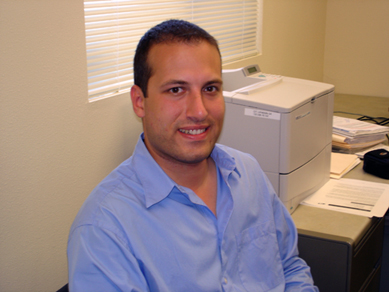UCSD Division's Cahit Akin Mixes Technology and Business
September 29, 2004 -- "I'm drawn to vibrant, 'youthful' research environments like Calit² and UCSD," says Cahit Akin, new project scientist in the UCSD division. "You can see this in the new buildings being constructed on campus and ongoing recruitment of talented faculty."
|
He seems equally drawn to the world of venture capital, having been a campus partner for ITU (Information Technology University) Ventures while he was a PhD student at the University of Michigan. "ITU Ventures has these kinds of partners at the nation's top research universities scouting for interesting high-tech ideas that might lend themselves to start-up companies." Projects of interest can attract anywhere from $500,000 to $5 million in startup funding from the company.
Akin's current role with ITU as venture partner is to analyze the potential for commercialization of different projects from both technical and business perspectives, then make recommendations to the company on the candidates that would benefit most from venture capital investment.
"Calit² is one of the reasons my company got excited about UCSD," he says. "We're interested in the full spectrum of projects from materials to applications. I'm tracking several projects in semiconductor- and telecom-based technologies."
Akin's relationship with ITU Ventures is based on a mutual agreement, which includes equity in investments, but he formally works full time at Calit². There he coordinates activities on the Calit² Adaptive Systems project, working with the five PIs (Ramesh Rao, Rene Cruz, Sujit Dey, Pamela Cosman, and Geoff Voelker), their students, and representatives from industrial partner Ericsson, including Magnus Almgren, Per Johansson, and Rajesh Mishra.
"One of our recent successes on this project is that we've ported the Always Best Connected platform to a software-based linux platform," he says. This capability, which enables ad hoc wireless communication, can be deployed in the field. "It creates what I would call an 'intersection technology,'" adds Akin, "that can be used by various projects underway in Calit², such as WIISARD and RESCUE, which in turn fuels interactivity among the participants of those different projects in serendipitous ways." In a related project led by Mishra, this platform is being refined further with a light-emitting diode on top of the platform, indicating the strength of the radio signal, which will be able to be seen at a distance.
Akin received his BS in Electrical Engineering from Bilkent University, Ankara, Turkey, followed by an MS in Math and MS and PhD degrees in Electrical Engineering, all from the University of Michigan. "My personal research area is cellular wireless communications. That's what attracted me to Calit² in the first place," he says. "I'm especially excited that we'll have an Ericsson base station to experiment with on campus in the next month!"
According to Akin, Calit² is the "perfect intersection" between research and industry, and mirrors his dual interests in R&D and business. "What I particularly like about Calit² is that the work is not only research but it's also applications-driven. We get to build things, take our prototypes into field, and get data, which then feeds back into our research."


